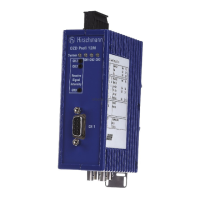34
Installation OZD Profi 12M ...
Release
01
07/2017
Note: If differences in potential occur between the grounding points, an
inadmissibly high compensating current could flow across the shielding
connected at both ends. Never eliminate this problem by removing the
shielding from the bus line. The following solution is permissible: Lay an
additional equipotential bonding cable parallel to the bus line. This additional
cable will carry the shield current.
3.3.4 Shield connections
Proceed as follows:
Secure the shield braid using metal cable clamps.
The clamps must fully enclose the shield and make good contact.
Only connect the lines via the copper braid shield, and not via the
aluminum foil shield. One side of the foil shield is attached to a plastic film
to increase its tearing strength, and is therefore non-conductive.
The shields of all cables which are routed into a cabinet from the outside
must be clamped at the point of entry inside the cabinet and connected to
the cabinet ground with a large contact surface area.
When removing the cable jackets, it is important to ensure that the braid
shield of the cables is not damaged. Tin-plated or galvanically stabilized
surfaces are ideal for optimum contacting between grounding elements.
With zinc-plated surfaces, suitable threaded connections must be
provided for the required contacts. Painted surfaces at the contact points
are unsuitable.
Shield clamps/contact points should not be used as strain relief devices.
Contact with the shield bus could otherwise deteriorate or break
completely.

